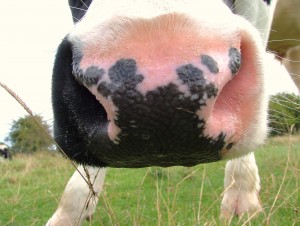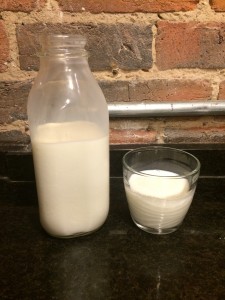 It’s no doubt that Virginians want to be happy and healthy! There are tons of ways to go about living a healthier lifestyle, including incorporating nutritious, healthy foods. With that, you may have been thinking of incorporating raw or unpasteurized milk into your diet. We are happy you are here and doing your research!
It’s no doubt that Virginians want to be happy and healthy! There are tons of ways to go about living a healthier lifestyle, including incorporating nutritious, healthy foods. With that, you may have been thinking of incorporating raw or unpasteurized milk into your diet. We are happy you are here and doing your research!
There is much conflict over the “raw milk revolution” and at VDH we want to assist the people of Virginia in maintaining a healthy lifestyle with a minimal amount of risk to their well-being. Our goal is to keep the risk of contamination in milk low to ensure the people of the Commonwealth are safely drinking one of the most popular beverages nature offers. Read below for responses to a few common questions and assumptions:
“Pasteurization kills all of the nutrients and enzymes present in raw milk.”
While heating of any food or beverage may inactivate some enzymes and reduce some nutrients, many studies have shown that pasteurization of milk does not significantly change its nutritional value. You will still get the same health benefits of drinking pasteurized milk as you would with raw milk without the risk of vomiting, diarrhea, or kidney disease.
Fun Fact: Milk is known to pack some major nutrient benefits like calcium, potassium, and Vitamin D. Vitamin D helps absorb calcium, promotes bone health, aids in immune system functioning, improves cognitive functioning, and may reduce the risk of cancer and heart disease; however, it is not naturally present in raw milk in significant amounts. You can get Vitamin D from sunlight, certain foods, and fortified milk.
“Many people drank raw milk growing up and never got sick.”
 If you’ve been doing your research on raw milk, you have definitely heard this and it’s definitely true for some. However, the thing with milk is that no single batch will have the same potential for germs, and it’s extremely unpredictable as to how each person’s body will react to contaminates present in the milk. Some people grow up living on a farm and drinking raw milk “straight from the teat”, and they most likely have a higher immune response to common microbes found in milk. Bacteria that are in low concentrations while on the farm have the potential to rapidly grow during transport to your house and into your cup. Many factors play into milk safety, and pasteurization is really the only way to ensure your safety. Just remember: you NEVER know what germs are in raw milk, what concentration they are in, or how YOUR body will react to them.
If you’ve been doing your research on raw milk, you have definitely heard this and it’s definitely true for some. However, the thing with milk is that no single batch will have the same potential for germs, and it’s extremely unpredictable as to how each person’s body will react to contaminates present in the milk. Some people grow up living on a farm and drinking raw milk “straight from the teat”, and they most likely have a higher immune response to common microbes found in milk. Bacteria that are in low concentrations while on the farm have the potential to rapidly grow during transport to your house and into your cup. Many factors play into milk safety, and pasteurization is really the only way to ensure your safety. Just remember: you NEVER know what germs are in raw milk, what concentration they are in, or how YOUR body will react to them.
“Raw milk CURES diseases like asthma, cancer, heart disease, and allergies.”
“Pasteurization CAUSES diseases like asthma, cancer, heart disease, and allergies.”
“People with lactose intolerance can consume raw milk without the troubles they would experience with pasteurized milk.”

Those sickened in raw milk outbreaks were 13 times more likely to be hospitalized than those who became ill from pasteurized milk during an outbreak.
“It is safe for me and my family to begin consuming raw milk.”
“I know my farmer and I’ve seen his healthy cows.”
 Farmers markets and eating locally are all the rage… and for good reason! There are Virginia farmers currently producing safe pasteurized milk and who you may already know! However, producing raw milk for sale is not a smart public health idea for Virginians. Even the healthiest, well (grass) fed, “organic” cows can carry disease and bacteria without ever knowing it from their appearance. The best of sanitary conditions cannot provide assurance that milk is free of contaminates. Raw milk production on a large scale increases the risk that sanitary practices become even more convoluted and dirty. Even if rigorous sampling is conducted, too many variables have the potential to come into play before the “shelf life” of raw milk reaches you. You never know what your cup of milk has in it when it hasn’t been through proper processing.
Farmers markets and eating locally are all the rage… and for good reason! There are Virginia farmers currently producing safe pasteurized milk and who you may already know! However, producing raw milk for sale is not a smart public health idea for Virginians. Even the healthiest, well (grass) fed, “organic” cows can carry disease and bacteria without ever knowing it from their appearance. The best of sanitary conditions cannot provide assurance that milk is free of contaminates. Raw milk production on a large scale increases the risk that sanitary practices become even more convoluted and dirty. Even if rigorous sampling is conducted, too many variables have the potential to come into play before the “shelf life” of raw milk reaches you. You never know what your cup of milk has in it when it hasn’t been through proper processing.“Milk-borne illnesses only occur in raw milk.”
“Drinking raw milk is the only way to improve the health of my family.”
During 2006-2013:
- 99 outbreaks from unpasteurized milk products
- 995 were ill
- 77 hospitalizations
- 79% of all outbreaks reported were from states that allow the sale of raw milk
- 69 outbreaks in legal states
- 14 outbreaks in illegal states
- Outbreaks increase as more states allow the sale of raw milk
Resources & additional information on raw milk:
CDC: Raw Milk Infographic
CDC Feature: Raw (Unpasteurized) Milk
CDC: Real Stories of the Dangers of Raw Milk
Foodsafety.gov: Myths About Raw Milk
FDA: Dangers of Raw Milk: Unpasteurized Milk Can Pose a Serious Health Risk
FDA: Raw Milk Misconceptions & The Danger of Raw Milk Consumption

